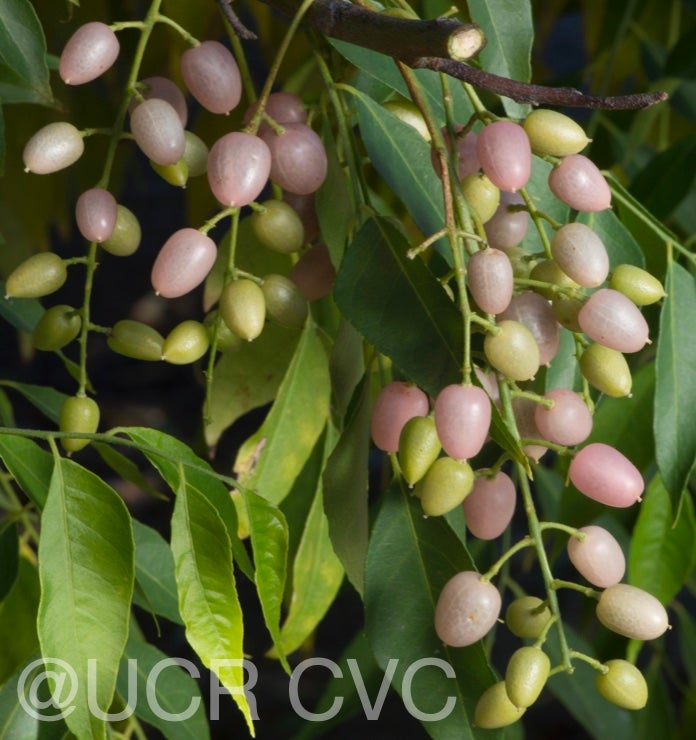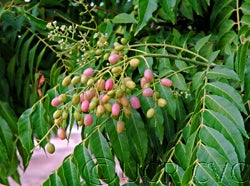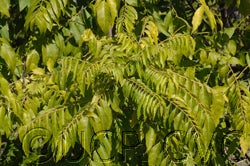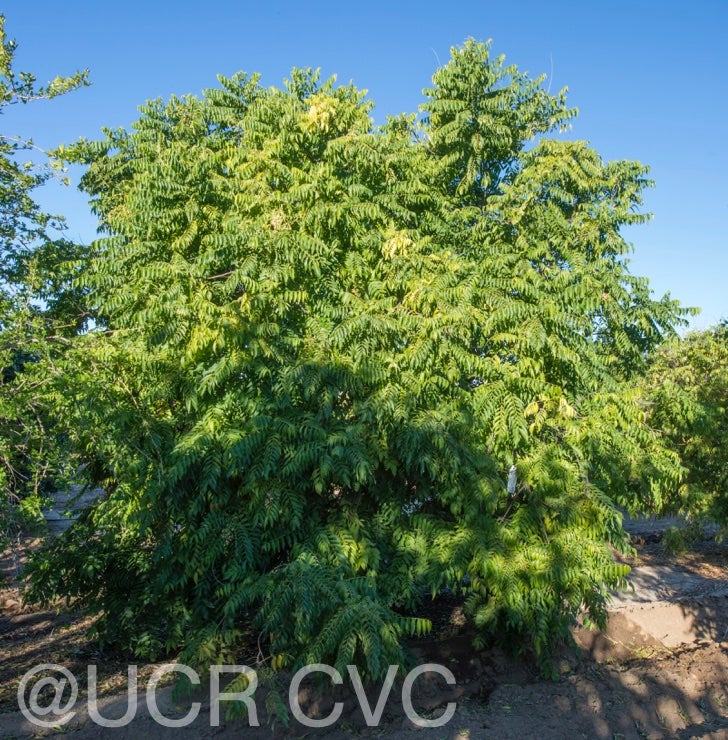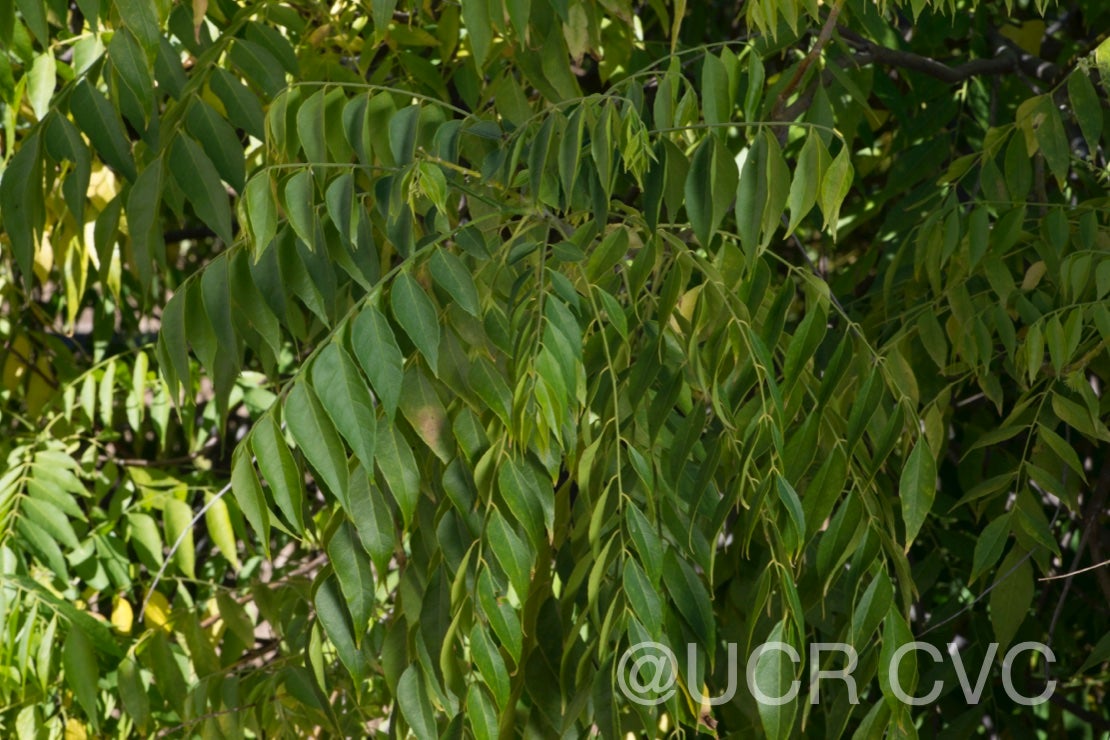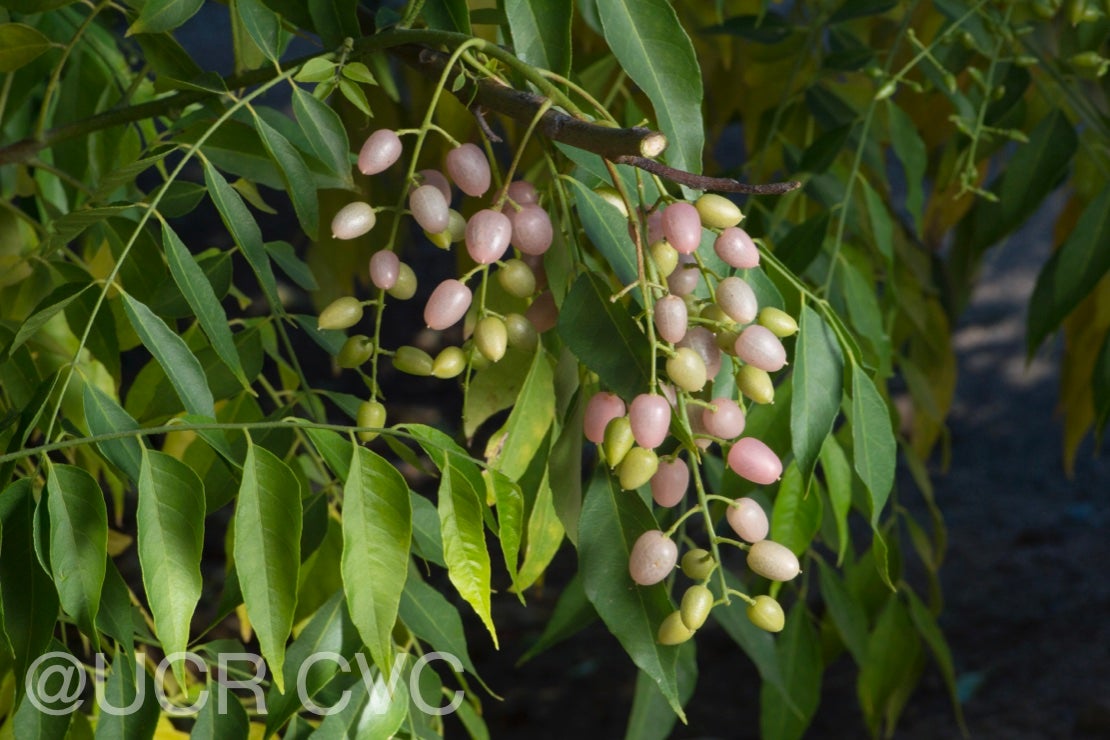Clausena excavata
CRC 3166
PI 235419
Source
Received as seed from Ed Pollock, Malong Rd., Parkes N.S.W., Australia, 1956.
Parentage/origins
Parents unknown
Rootstocks of accession
own root
Season of ripeness at Riverside
July to January
Season of flowering at Riverside
September to June
Description from The Citrus Industry Vol. 1 (1967)
"Hooker (1875 vol. 1, p. 504) described this species, with slight rearrangement, as follows: "A [small] tree, branchlets as thick as a crow-quill and, as well as the inflorescence and leaflets, more or less softly tomentose; leaves 15-30 foliolate, 6-12 in. [15-30 cm] long; petiole slender, cylindric, more tomentose than the leaflets, which are very oblique at the base, petioluled, 2-3.5 in. [5-8 cm] long, ovate or lanceolate, acuminate, membranous, crenate, upper ones often falcate. Panicle 4-12 in. [10-30 cm] high, pyramidal, branches spreading, alternate. Flowers 4-merous, shortly pediceled, 1/6 in. [4 mm] diam., white, buds globose. Petals oblong, glabrous. Ovary ovoid or elliptic, sub-4-gonal stipitate, hairy or hirsute; style stout, about equaling the ovary. Fruit 3/4 in. [18 mm] diam., broadly oblong."
Burmann’s original description of C. excavata (l.c.) covers the stamens, in translation, as follows: "Staminal filaments 8, subulate, shorter than the corolla, the inferior part dilated and thickened, hollowed out (‘excavata') within."
Guillaumin (1911, p. 661) described the stamens, in translation, as follows: "Stamens 8, one-third or a half shorter than the petals; filaments awl-shaped above, then suddenly dilated, concave and papillose at the base with a hump at the upper part; anthers oval, apiculate." He also figured the stamens (1911, p. 664, fig. 70 [9-10]), showing the lower expanded and papillose part of the filament to be strongly curved outward and the upper slender, smooth portion to be even more strongly curved outward, almost into a semicircle.
The gynoecium of this species, as studied from serial microtome sections, shows the following structure: pistil 3.2-4.2 mm long; gynophore very strongly developed, completely glabrous, hourglass-shaped, usually with a basal annulus 1-1.2 mm diam., then contracted to 0.7-0.8- mm diam., then expanded into a more or less cupulate top, 1-1.2 mm diam., embracing the base of the ovary, with edges often showing small oil glands; ovary cylindrical or conoid, usually strongly hirsute, 1-5 mm long, 1-1.2 mm wide, often with a few small oil glands where the style is attached; style cylindrical, not narrowed at point of attachment, but merging into the top of the ovary, glabrous, 1-1.2 mm long, 0.5-0.8 mm wide, stigma very short, flat-topped, only slightly wider than the style.
This species is the type of the genus Clausena and has the widest distribution of any species, ranging through the East Indian Archipelago to southeastern Asia. As would be expected from its very wide range, the species has undergone many variations, until the forms from Sumatra and Taiwan do not at first sight seem to belong together in a single species. However, the pistil of this species is distinctive, and is much the same in all these forms and very different from that of the other species of the genus Clausena. It has a rather full, smooth, hourglass-shaped gynophore supporting the more or less strongly hirsute ovary. The ovary tapers gradually into the thick style, which shows no constriction at its base as do the styles of many other species."
Availability
Not commercially available through the Citrus Clonal Protection Program. Please check with your local nursery.
USDA Germplasm Resources Information Network page for Clausena excavata
